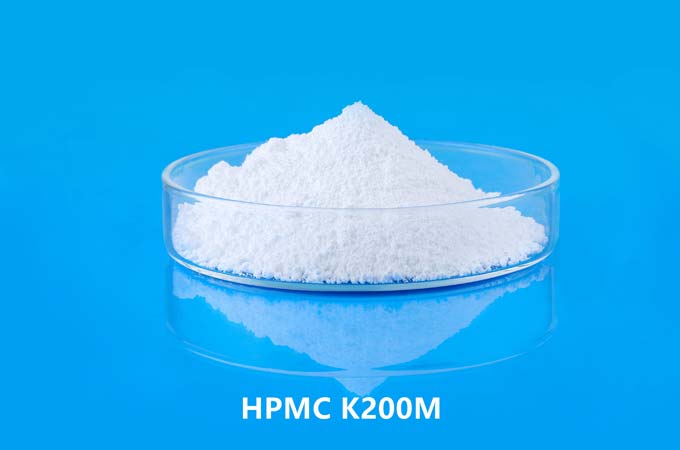HPMC (Hydroxypropyl Methylcellulose) is a functional polymer material widely used in adhesives and sealants and has many important functions.
1. Thickener
One of the most significant functions of HPMC is as a thickener. It can effectively increase the viscosity of adhesives and sealants, thereby improving the thixotropic and rheological properties of the materials. In adhesives and sealants, ideal rheology is key because it directly affects the material's workability during construction. HPMC can significantly increase the viscosity at low concentrations, thereby helping to form the appropriate paste or liquid form, which is critical for controlling the coating thickness of the adhesive and the caulking effect of the sealant.
2. Moisture retention
Another important property of HPMC is its good moisture retention capacity. In many adhesive and sealant applications, especially water-based materials, HPMC can effectively delay the evaporation of water, allowing the material to remain moist after application. This characteristic is particularly important for the bonding process, because too rapid evaporation of water can lead to early drying of the material, thereby affecting the bonding effect or sealing performance. In addition, moisture retention can also prevent problems such as cracking and warping caused by the substrate absorbing water too quickly.
3. Suspension stability
HPMC can also improve the suspension stability of adhesives and sealants, making the solid particles (such as fillers, pigments, etc.) evenly distributed and difficult to settle. This function is mainly to wrap and disperse solid particles in the liquid phase through the network structure of HPMC, thereby maintaining the uniformity and stability of the entire system. In adhesives and sealants, uniform distribution of fillers is critical because uneven settlement of fillers can lead to local changes in material properties, affecting its final mechanical properties and appearance.
4. Enhance bonding performance
HPMC can also enhance the bonding properties of adhesives. Although HPMC itself does not have a high viscosity, it can indirectly enhance the adhesive's adhesion to the substrate by increasing the overall viscosity and moisture retention of the system. In addition, when HPMC is used in conjunction with other polymers or tackifiers, its molecular structure can form a synergistic effect with these ingredients, thereby further improving the adhesion.
5. Adjust drying time
In many adhesive and sealant applications, regulating drying time is a critical design requirement. Due to its ability to control water evaporation, HPMC can delay the drying speed of materials, giving construction workers more time to make adjustments and operations. This is particularly important when coating large areas or complex substrate applications, as time is required to ensure even spreading and bonding of the material. In addition, by adjusting the amount and type of HPMC, the drying time of the adhesive can be flexibly controlled to adapt to changes in different environmental conditions (such as temperature, humidity).
6. Resistance to sagging
HPMC's sag resistance also plays an important role in adhesives and sealants. Especially in vertical construction or scenes such as ceilings and walls, excessive fluidity of adhesives or sealants will cause the material to sag or sag, affecting the construction quality and appearance. Through its thickening effect, HPMC can effectively improve the material's resistance to sagging, ensuring that it can remain in place after construction and avoid displacement or deformation due to gravity.
7. Improve durability
HPMC’s contribution to the durability of adhesives and sealants is evident in multiple aspects. First, it has good resistance to degradation and remains stable under changes in temperature and humidity, which helps extend the service life of adhesives and sealants. Secondly, HPMC shows good stability under ultraviolet light, so it can resist photoaging when used outdoors. In addition, HPMC can improve the water and chemical resistance of adhesives and sealants, further enhancing the environmental adaptability of the material.
8. Improvement of construction performance
HPMC can significantly improve the application performance of adhesives and sealants. During the construction process, the fluidity and ease of operation of materials are important factors for construction quality. HPMC can reduce waste and unnecessary rework during the construction process by adjusting the consistency of the adhesive to make it smoother, easier to apply and distribute. In addition, the lubrication effect of HPMC also helps reduce the resistance of construction tools and improve construction efficiency.
9. Environmental protection and safety
Since HPMC is an environmentally friendly and non-toxic material, the application of HPMC in adhesives and sealants has great advantages in the context of modern green buildings and increasingly stringent environmental standards. It contains no harmful substances and does not release volatile organic compounds (VOCs) during the construction and curing process, making it harmless to the environment and human health. Therefore, HPMC is an ideal choice in scenarios with high environmental protection requirements, such as interior decoration, food packaging and other fields.
10. Compatibility with other materials
HPMC has good compatibility and can be mixed with a variety of commonly used adhesive and sealant raw materials, such as polyvinyl alcohol, ethylene-vinyl acetate copolymer (EVA), polyurethane, etc. It can improve the performance of the overall system without changing the properties of other raw materials. This compatibility allows HPMC to play its role in various formulations without adverse reactions with other components, ensuring the stability of the material.
HPMC's versatility in adhesives and sealants makes it an indispensable additive. By enhancing the material's viscosity, moisture retention capacity, sag resistance and durability, HPMC not only improves the material's construction performance, but also improves its adaptability and long-term stability in various environments. At the same time, the environmental protection characteristics of HPMC make it have important application value in today's construction and industrial fields that pursue green and sustainable development.
At Kima Chemical, our diverse selection of cellulose ether products, such as wholesale HPMC, caters to multiple industrial sectors. We take pride in delivering exceptional service, ensuring every client receives expert assistance and high-quality solutions for their operations.
 English
English 日本語
日本語 français
français Deutsch
Deutsch Español
Español italiano
italiano русский
русский português
português العربية
العربية Türkçe
Türkçe Nederland
Nederland



